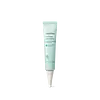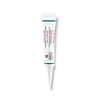What's inside
What's inside
 Key Ingredients
Key Ingredients

 Benefits
Benefits

 Concerns
Concerns

 Ingredients Side-by-side
Ingredients Side-by-side

Water
Skin ConditioningButylene Glycol
HumectantCyclopentasiloxane
EmollientAlcohol
AntimicrobialGlycerin
HumectantCyclohexasiloxane
EmollientTorreya Nucifera Seed Oil
EmollientHydroxyethyl Acrylate/Sodium Acryloyldimethyl Taurate Copolymer
Emulsion StabilisingPEG-240/Hdi Copolymer Bis-Decyltetradeceth-20 Ether
StabilisingPolysorbate 20
EmulsifyingPropanediol
SolventSalicylic Acid
MaskingDimethicone
EmollientDimethiconol
EmollientAmmonium Acryloyldimethyltaurate/Vp Copolymer
Potassium Hydroxide
BufferingDimethicone/Vinyl Dimethicone Crosspolymer
Skin ConditioningDipotassium Glycyrrhizate
HumectantMadecassoside
AntioxidantGlyceryl Caprylate
EmollientRosa Centifolia Flower Extract
AstringentXanthan Gum
EmulsifyingDisodium EDTA
Dextrin
AbsorbentTheobroma Cacao Extract
Skin ConditioningCamellia Sinensis Leaf Extract
AntimicrobialOpuntia Coccinellifera Fruit Extract
Skin ConditioningCamellia Japonica Leaf Extract
Skin ConditioningBeta-Glucan
Skin ConditioningOrchid Extract
Skin ConditioningCitrus Unshiu Peel Extract
MaskingPhenoxyethanol
PreservativeParfum
MaskingWater, Butylene Glycol, Cyclopentasiloxane, Alcohol, Glycerin, Cyclohexasiloxane, Torreya Nucifera Seed Oil, Hydroxyethyl Acrylate/Sodium Acryloyldimethyl Taurate Copolymer, PEG-240/Hdi Copolymer Bis-Decyltetradeceth-20 Ether, Polysorbate 20, Propanediol, Salicylic Acid, Dimethicone, Dimethiconol, Ammonium Acryloyldimethyltaurate/Vp Copolymer, Potassium Hydroxide, Dimethicone/Vinyl Dimethicone Crosspolymer, Dipotassium Glycyrrhizate, Madecassoside, Glyceryl Caprylate, Rosa Centifolia Flower Extract, Xanthan Gum, Disodium EDTA, Dextrin, Theobroma Cacao Extract, Camellia Sinensis Leaf Extract, Opuntia Coccinellifera Fruit Extract, Camellia Japonica Leaf Extract, Beta-Glucan, Orchid Extract, Citrus Unshiu Peel Extract, Phenoxyethanol, Parfum
Sulfur
AntiseborrhoeicWater
Skin ConditioningNiacinamide
SmoothingZea Mays Starch
AbsorbentGlycolic Acid
BufferingStearyl Alcohol
EmollientGlycerin
HumectantOctyldodecyl Myristate
EmollientCetearyl Alcohol
EmollientGlyceryl Stearate
EmollientMagnesium Aluminum Silicate
AbsorbentPhenoxyethanol
PreservativePolyacrylamide
Ceteareth-20
CleansingSodium Hydroxide
BufferingPEG-100 Stearate
Phenylethyl Resorcinol
AntioxidantTocopheryl Acetate
AntioxidantC13-14 Isoparaffin
EmollientDisodium EDTA
Laureth-7
EmulsifyingAllantoin
Skin ConditioningAloe Barbadensis Leaf Juice
Skin ConditioningHydrogenated Lecithin
EmulsifyingEthylhexylglycerin
Skin ConditioningGlycyrrhiza Glabra Root Extract
BleachingSulfur, Water, Niacinamide, Zea Mays Starch, Glycolic Acid, Stearyl Alcohol, Glycerin, Octyldodecyl Myristate, Cetearyl Alcohol, Glyceryl Stearate, Magnesium Aluminum Silicate, Phenoxyethanol, Polyacrylamide, Ceteareth-20, Sodium Hydroxide, PEG-100 Stearate, Phenylethyl Resorcinol, Tocopheryl Acetate, C13-14 Isoparaffin, Disodium EDTA, Laureth-7, Allantoin, Aloe Barbadensis Leaf Juice, Hydrogenated Lecithin, Ethylhexylglycerin, Glycyrrhiza Glabra Root Extract
Ingredients Explained
These ingredients are found in both products.
Ingredients higher up in an ingredient list are typically present in a larger amount.
Disodium EDTA plays a role in making products more stable by aiding other preservatives.
It is a chelating agent, meaning it neutralizes metal ions that may be found in a product.
Disodium EDTA is a salt of edetic acid and is found to be safe in cosmetic ingredients.
Learn more about Disodium EDTAGlycerin is already naturally found in your skin. It helps moisturize and protect your skin.
A study from 2016 found glycerin to be more effective as a humectant than AHAs and hyaluronic acid.
As a humectant, it helps the skin stay hydrated by pulling moisture to your skin. The low molecular weight of glycerin allows it to pull moisture into the deeper layers of your skin.
Hydrated skin improves your skin barrier; Your skin barrier helps protect against irritants and bacteria.
Glycerin has also been found to have antimicrobial and antiviral properties. Due to these properties, glycerin is often used in wound and burn treatments.
In cosmetics, glycerin is usually derived from plants such as soybean or palm. However, it can also be sourced from animals, such as tallow or animal fat.
This ingredient is organic, colorless, odorless, and non-toxic.
Glycerin is the name for this ingredient in American English. British English uses Glycerol/Glycerine.
Learn more about GlycerinPhenoxyethanol is a preservative that has germicide, antimicrobial, and aromatic properties. Studies show that phenoxyethanol can prevent microbial growth. By itself, it has a scent that is similar to that of a rose.
It's often used in formulations along with Caprylyl Glycol to preserve the shelf life of products.
Water. It's the most common cosmetic ingredient of all. You'll usually see it at the top of ingredient lists, meaning that it makes up the largest part of the product.
So why is it so popular? Water most often acts as a solvent - this means that it helps dissolve other ingredients into the formulation.
You'll also recognize water as that liquid we all need to stay alive. If you see this, drink a glass of water. Stay hydrated!
Learn more about Water